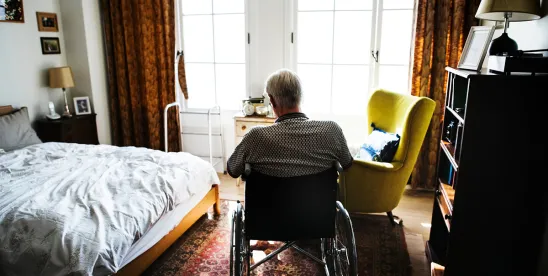Overview
On May 10, 2024, the Centers for Medicare and Medicaid Services (“CMS”) published a final rule implementing mandatory hours per resident day (“HPRD”) requirements for various levels of nursing staff for skilled nursing facilities (“SNFs”) through a phased-in approach. Although the existing requirements for providers to ensure they have “sufficient staff” to meet residents’ needs and well-being remain largely unmodified, these mandatory staffing minimums add an additional layer of complexity as facilities navigate staffing shortages and changing resident population case mixes.
Basic Rule
Most immediately, by August 8, 2024, all SNFs, are required to update their facility assessments to determine what resources are necessary to care for residents competently in day-to-day operations as well as emergencies. Although SNFs have been required to complete such an assessment at least annually pursuant to 42 CFR 483.70(e), all SNFs must have a documented update on file no later than August 8, 2024.
Non-rural facilities will have 2 years, until May 11, 2026, to increase their registered nursing staff (“RNs”) to ensure at least one RN is present and on-site 24 hours a day, 7 days a week and to adjust their staffing to ensure overall staffing meets a minimum of 3.48 HPRD. Rural facilities will have 3 years, until May 10, 2027, to meet this requirement.
Thereafter, non-rural facilities will have 3 years (until May 10, 2027), to adjust their staffing to meet a minimum of 0.55 HPRD for RNs and 2.45 HPRD for nurse aides (which includes certified nurse aides, aides in training, and medication aides/technicians). Rural facilities will have 5 years (until May 10, 2029) to meet this requirement.
CMS did not impose any mandatory HPRD requirements for licensed professional nurses (“LPNs”) and licensed vocational nurses (“LVNs”), citing a lack of correlation between increased quality of care with an LPN/LVN HPRD requirement. However, LPN/LVNs can be used to count towards the overall 3.48 HPRD minimum.
The staffing rules also apply to Medicaid-certified nursing facilities and intermediate care facilities for individuals with intellectual disabilities, but these providers are not required to comply with the rule until May 10, 2028.
Exemptions
A SNF may qualify for an exemption to the staffing rule if it: 1) it is located in a region where the provider-to-population ratio is at least 20% below the national average, 2) it demonstrates good faith efforts to hire and retain staff, and 3) it demonstrates financial commitment to retain direct care staff. “Good faith efforts” can include posting of job listings, documented job vacancies and the number of job offers made at the prevailing wages, data supporting what the prevailing wages are in the community, and whether a facility has a written staffing plan. “Financial commitment” is demonstrated by the amount of financial resources the facility spends on nurse staffing relative to its revenue.
If an exemption is granted, the SNF will be required to post a notice of its exemption status at the facility, inform each current and prospective resident, and send a copy of the notice to State Long-Term Care Ombudsman. Additionally, exemption status will be published on Care Compare. Exemptions are not available to SNFs with staffing-related violations, SNFs that have failed to submit PBJ staffing data or Special Focus Facilities.
Adds to Existing Requirements
It is important to note that although minimum staffing ratios will become an important marker of sufficient resident care, the new rule supplements, and does not supersede or replace, the current requirements that a facility has “sufficient staff” to meet residents' needs safely and in a manner that promotes their well-being. Historically, CMS has deferred to facilities to determine what qualifies as “sufficient staff” based on their resident population case mix, care plans, acuities, and diagnoses. Providers should still expect that CMS will require it to ensure that it has sufficient staff to meet residents’ needs, and that number could be higher than the prescribed minimums depending on the provider’s resident population at any given time.
Court Challenges
Less than two weeks after the final rule was published, the American Health Care Association (representing more than 14,000 nursing homes), along with the Texas Health Care Association and a handful of individual nursing home plaintiffs filed a lawsuit in the Northern District of Texas challenging these new minimum staffing rules. Plaintiffs argue that the rule exceeds CMS's statutory authority, contradicts congressional intent, and imposes impractical and financially burdensome staffing standards. Specifically, they contend that the rules fail to consider the nationwide shortage of qualified nursing staff and will disproportionately affect smaller, rural facilities. Plaintiffs seek declaratory relief finding the new staffing requirements to be arbitrary and capricious as having exceeded CMS’ statutory authority and injunctive relief to prevent enforcement of the rules.
As with all new rules, time—and the court system—will tell how impactful these new rules will ultimately be.






 />i
/>i
